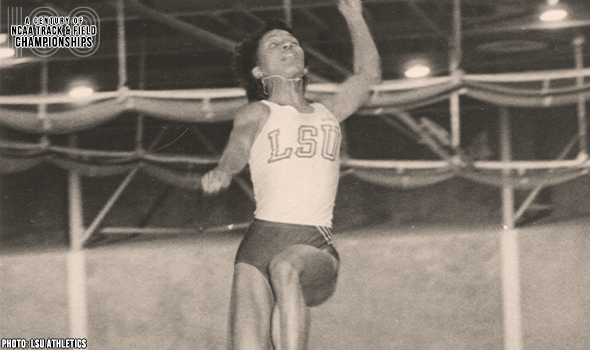
LSU’s Echols Set Lofty Long Jump Record
The most intriguing aspect about Sheila Echols setting the NCAA Division I Outdoor Track & Field Championships meet record in the long jump might not be that her leap of 6.94m (22-9¼) has remarkably endured 33 years since 1987.
Interestingly, Echols’ jumps at the NCAA Championships were her first legal marks of the outdoor season. After winning the NCAA Indoor title in March, Echols’ season took a detour in her first outdoor competition in April, fouling three times and injuring her quad in the process. Fortunately the injury wasn’t season-ending, as she was able to continue sprinting.
Echols’ participation in the 1987 NCAA Championships was crucial to LSU, which aimed for is first outdoor team crown and hosted the meet at a newly-renovated Bernie Moore Track Stadium. Her first effort of 6.58m (21-7¼) ended up being far enough to win – but went much farther in Round 4 with her record – a PR by 24 centimeters (9½”).
The effort was – and still is – third on the all-time collegiate list, as only Jackie Joyner of UCLA (6.99m/22-11¼) and Carol Lewis of Houston (6.97m/22-10½) have gone farther.
Meanwhile, Echols continued earning points for the Lady Tigers, finishing third in the 100 (behind future Olympic gold medalists Gwen Torrence of Georgia and Gail Devers of UCLA) and leading off the second-place 4×100 relay team. Echols ended up with a team-high 18 points as LSU won its first outdoor women’s team title. LSU, of course, would win many more, and their 11-year streak of victories (1987-97) is the longest in meet history, men or women.
A year later, Echols ran the second leg on the U.S. 4×100 relay team that beat East Germany for gold at the Seoul Olympic Games.
The NCAA and collegiate track & field will mark a momentous milestone in the spring of 2021 -- the 100th anniversary of the NCAA Championships and with that, the NCAA Track & Field Championships. In June 1921, the University of Chicago hosted the first track & field championships in NCAA history.
This point can’t be emphasized enough: Not only was the event the first for NCAA track & field, but the first championships for any sport under the sponsorship of the NCAA.
To celebrate, over each of the next 365 days, the U.S. Track & Field and Cross Country Coaches Association (USTFCCCA) will celebrate moments, student-athletes, and coaches that have made a century’s worth of championships special. From humble beginnings to important historical milestones to the modern-day, collegiate track & field has evolved with the American society.
The 2021 edition of the NCAA Division I Outdoor Track & Field Championships begin with preliminary round action on May 27-29 in Jacksonville, Fla., and College Station, Texas. The championships final site and culmination of the celebration is slated for June 9-12, 2021 at the newly rebuilt Hayward Field in Eugene, Ore.

O-H-I- … Oh, What A Race By Davis!
Glenn Davis of Ohio State set a WORLD RECORD in the 440 yards at the 1958 NCAA Outdoor Track & Field Championships!
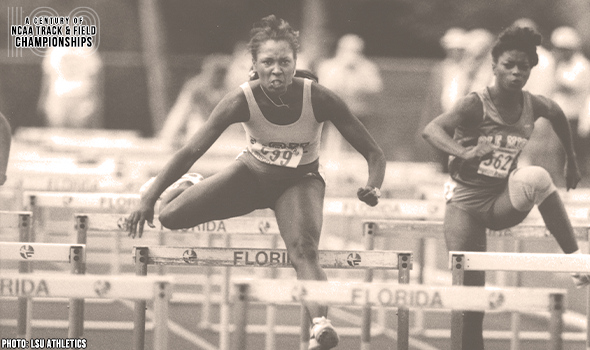
LSU Hurdle Dominance Yet To Be Matched
Tananjalyn Stanley set a meet record of 12.70 in the 100 Hurdles at the 1989 NCAA DI Outdoor T&F Championships, which jump-started LSU’s dominance in the event over the next few years.

Anchors Aweigh! Navy Wins NCAA Team Title
Back in 1945, the United States Naval Academy (Navy) won the team title at the NCAA Outdoor Track & Field Championships!
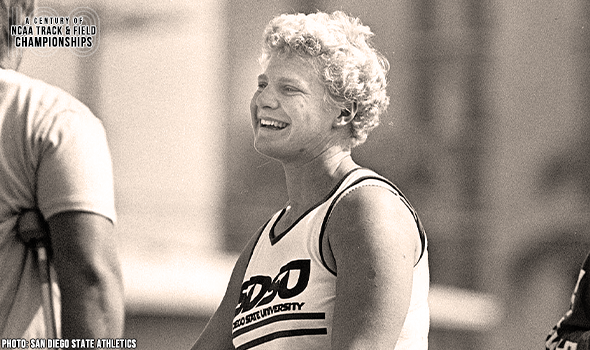
Pagel Won Shot Put With Record Heave
Ramona Pagel won the shot put at the 1985 NCAA Division I Outdoor Track & Field Championships with a meet record heave!

Eyestone Held Nothing Back At NCAAs
Ed Eyestone of BYU won three career titles at the NCAA Division I Outdoor Track & Field Championships, including a 5K-10K double in 1985!
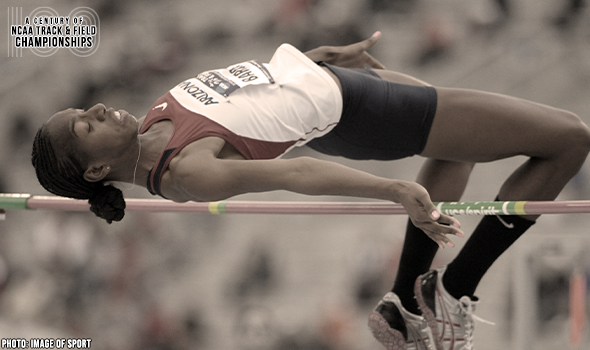
Barrett Scared Long-Standing MR In 2013
Katrena Johnson set a collegiate record in the high jump at the 1985 NCAA Division I Outdoor Track & Field Championships and led a 1-2-3 Arizona sweep!

Bell Rang True In Long Jump
Greg Bell won back-to-back long jump titles at the NCAA Outdoor Track & Field Championships and broke a meet record in 1957!
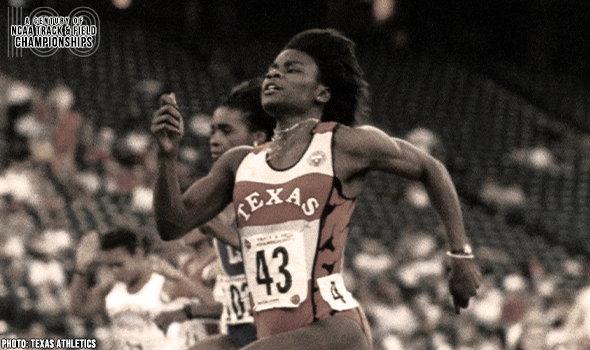
Guidry Capped Legendary Career In 1991
Carlette Guidry, who won 12 NCAA titles in her career, completed the 100-200 sweep in 1991.

Stanford Romped To National Title in 1928
Stanford won the team title at the 1928 NCAA Outdoor Track & Field Championships with a then-meet record score of 72 points. Eric Krenz (pictured) led the way with 18 team points.

Smith Jumped Her Way Into Elite Company
Trecia-Kaye Smith won three career titles at the NCAA Division I Outdoor Track & Field Championships with two of those in the long jump, another in the triple jump.

